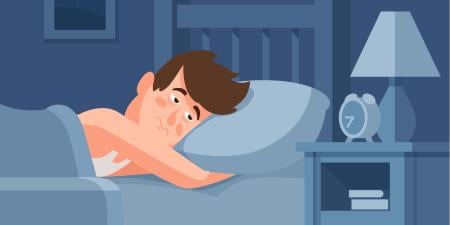Let me begin with a story reported by National Public Radio on July 26, 2006:
Some employers are doing the unthinkable: encouraging workers to nap on the job. And one firm near Wall Street is trying to cash in on the concept of workday napping. It has opened a napping boutique, filled with bankers, brokers and cops who pay $14 for a 20-minute nap [1].
Sleep and sleepiness are being tied more and more to changes in the nature of modern work, particularly to the increase in the number of hours worked and the ever-accelerating pace of work. In 1967 celebrated futurist Herman Kahn predicted that Americans would enjoy 13 weeks of vacation and a 4-day work week [2]. The challenge, it seemed, would be figuring out what to do with all our free time. Kahn, of course, was wrong. Today, Americans work more hours each year then they did in 1970, and, instead of 13 weeks of vacation, the average American now gets 4 (and that includes holidays). Perhaps more importantly, the nature of the work itself has changed. We live in a world increasingly organized around cerebral labor and the fading boundary between home and work.
The Problem of Fatigue: Muscle Labor
The academic discipline of industrial psychology was born when employers began searching for qualified employees who had internalized work discipline [3]. Early industrial psychologists like Hugo Munsterberg developed tests to assist business owners in identifying the best and most industrious employees, to find out "whether a man was moral or honest and whether he was likely to go to sleep on the job" [4]. By the turn of the 20th century, studies that timed and quantified the body's capacity to express energy claimed to have isolated the economies of force in the human nervous system [5]. Proper sleep and naps, it is safe to say, were not among those "economies of force."
If discussed at all, sleep was more often than not regarded as a necessary evil by many, capitalists, and judges of moral character who warned that "wasted hours are wasted money, too much sleep parboils the flesh, and sleep is a felon that steals precious time" [6]. When assessing a person's moral suitability for work, sleep fell outside the purview of scientific management. It wasn't sleepiness per se that vexed scientific managers, it was fatigue. Fatigue was thought of as a state of physical exhaustion. Eventually, depleted bodies unable to meet the demands of timed, muscle-driven industrialism simply quit working [4, 5]. At this point the work break reintroduced quasi-private time into the workday, while the workplace nap lurked in the catacombs of the factory as what deCerteau [7] calls a clandestine form of rebellion against the discipline of work.
From Fatigue to Sleepiness: Advance of the Cerebral Worker
If fatigue was the primary problem of working bodies in the era of muscle labor, it is safe to say that drowsiness, defined as the absence of mental acuity, is the primary problem of working bodies in the era of flexible work and the expansion of cerebral labor [8]. Indeed, the drowsy, soporific body is frequently identified as a contributing cause of many contemporary social problems and misfortunes [9, 10]. If sleepiness was once thought of as simply a benign transition state, a prelude to sleep, it is now often described as a potential risk to self, others, and the interests of business. In testimony before a Congressional Subcommittee on Health and the Environment, a Stanford University professor makes this startling claim:
The grounding of the Exxon Valdez, the near meltdown at Three Mile Island, the Bhopal catastrophe, and the explosion of the space shuttle Challenger [were] all caused totally or in part by sleepy people [11].
The National Sleep Foundation [12] estimates that sleep deprivation costs $175 billion a year in escalated levels of stress and ensuing loss of productivity. A Gallup poll commissioned by the National Sleep Foundation reported that 51 percent of a random sample of adults admit that sleep deprivation�which results in both fatigue and drowsiness�negatively affects their job performance [12]. Fatigue, the way we are using it, refers to the tired body; drowsiness spotlights the tired mind. The drowsy person is someone who is not thinking clearly, is prone to bad judgment, and is likely to employ faulty reasoning. This is a sobering problem in a highly automated, information-driven economy that places a premium on mental acuity. Several survey-based studies document the close correlation between sleep loss in medical residents and accidents, quarrelsome behavior, and the use of medications to increase alertness [13, 14].
Enter the Workplace Nap: Some Preliminary Data
Sleep deprivation remains a badge of honor for many hard-working entrepreneurs, professionals, and parents. The maxim, "if you snooze you lose," is still widely applied. But there is now evidence that this heroic orientation to labor without reprieve is changing. A research institute dedicated to the identification of trends listed workplace naps as among the top 10 new habits of 1996 [15]. In a review of 23 napping studies conducted in various countries since 1970, David Dinges [16] estimated that an overall mean of 61 percent of respondents reported taking at least one nap for an average duration of 1.2 hours each week, while an overall mean of 30 percent of respondents reported napping at least four times a week. Seventy percent of 1,000 respondents to a non-systematic Internet survey conducted by Bill and Camille Anthony [17] reported that they sometimes nap at work. In a more systematic study, 16 percent of employees surveyed by the NSF reported that their employers sanctioned napping at work, and one-third of the adults surveyed said they would nap at work if they could [18].
So it seems that a new cultural frame is emerging, one that valorizes the workplace nap. Napping at work is not likely to replace "whistling while you work" any time soon, but there is little doubt that this once forbidden behavior is on the rise [19]. For many, sleeping at work is likely to remain a subversive act performed in a niche of invisibility, but alongside this more typical, covert act, is the increasingly visible, prescribed, workplace nap. But judgments on emergence of the nap during work hours must take into account contemporary problems of alertness, drowsiness, and performance that mark a shift in the U.S. from economies driven by brute strength and time to economies dependent upon information technology and the subtle work of cognitive and mental acuity necessary to complete complex projects. In summary, the emergence of fatigue and drowsiness as modern medical troubles are tied inexorably to radical changes in the workplace and its effects on the rhythms and tempo of everyday life. Historian Will Durant wrote somewhere, "No one in a hurry is ever quite civilized." A student I will call "Accelerated Amy" would likely agree. Amy writes:
If I'm reading, I think I should be writing. If I'm talking on my cell [phone]I wonder what is on my e-mail. If I'm watching CSI, I wonder what is happening on American Idol. When my boyfriend calls, I wonder if I should be talking with him or finishing a paper for tomorrow's class. I can't live in the present anymore. Maybe I never did...Oh, and I often wake up at 4 a.m. and can't go back to sleep.
References
-
National Public Radio. Napping makes inroads in the workplace. Morning Edition. July 26, 2006. Accessed August 16, 2008.
-
Agger B. Fast Capitalism. Champaign, IL: University of Illinois Press; 1988.
-
Rose N. Governing the Soul: the Shaping of the Private Self. 2nd ed. New York, NY: Free Association Books; 1999.
-
Baritz L. The Servants of Power: A History of the Use of Social Science in American Industry. Middletown, CT: Wesleyan University Press; 1960:49.
-
Rabinbach A. The Human Motor: Energy, Fatigue, and the Origins of Modernity. Berkeley, CA: University of California Press; 1992.
-
Thompson EP. The Making of the English Working Class. New York, NY: Vintage Books; 1966:88.
-
de Certeau M. The Practice of Everyday Life. Berkeley, CA: University of California Press; 1984.
-
Kroll-Smith S. The social production of the drowsy person. Perspectives on Social Problems. 2000;12:89-109.
-
Moore-Ede MC. The Twenty-Four Hour Society: Understanding Human Limits in a World that Never Sleeps. Reading, MA: Addison-Wesley Publishing Co; 1993.
-
Rosekind MR, Graeber R, Dinges RC, et al. Crew Factors in Flight Operations IX: Effects of Planned Cockpit Rest on Crew Performance and Alertness in Long-Haul Operations. Moffett, CA: NASA Ames Research Center ; 1994. Accessed August 18, 2008.
-
Kroll-Smith, 99.
-
National Commission on Sleep Disorders. Wake Up America: A National Sleep Alert. Bethesda, MD: US Department of Health and Human Services; 1993.
- Baldwin DC, Daughtery SR. Sleep deprivation and fatigue in residency training: results of a national survey of first- and second-year residents. Sleep. 2004;27(2):217-223.
- Samkoff J, Jacques C. A review of studies concerning effects of sleep deprivation and fatigue on residents' performance. Acad Med. 1991;66(11):687-693.
-
Celente G. Trend Report 1996. [Report available from the Trends Research Institute, P.O. Box 660, Rhinebeck, NY 12572 ].
-
Dinges, David F. Napping patterns and effects in human adults. In: Dinges DF, Broughton RJ, ed. Sleep and Alertness: Chronobiological, Behavioral, and Medical Aspects of Napping. New York, NY: Raven Publishing; 1989:171-204.
-
Anthony C, Anthony B. The Art of Napping at Work. Burdett, NY: Larson Publications; 1999.
-
National Sleep Foundation. Sleep in America: 2000. Washington, DC: National Sleep Foundation; 2000. Accessed August 18, 2008.
- Baxter V, Kroll-Smith S. Normalizing the workplace nap: blurring the boundaries between public and private space and time. Current Sociology. 2005;53(1):33-55.



